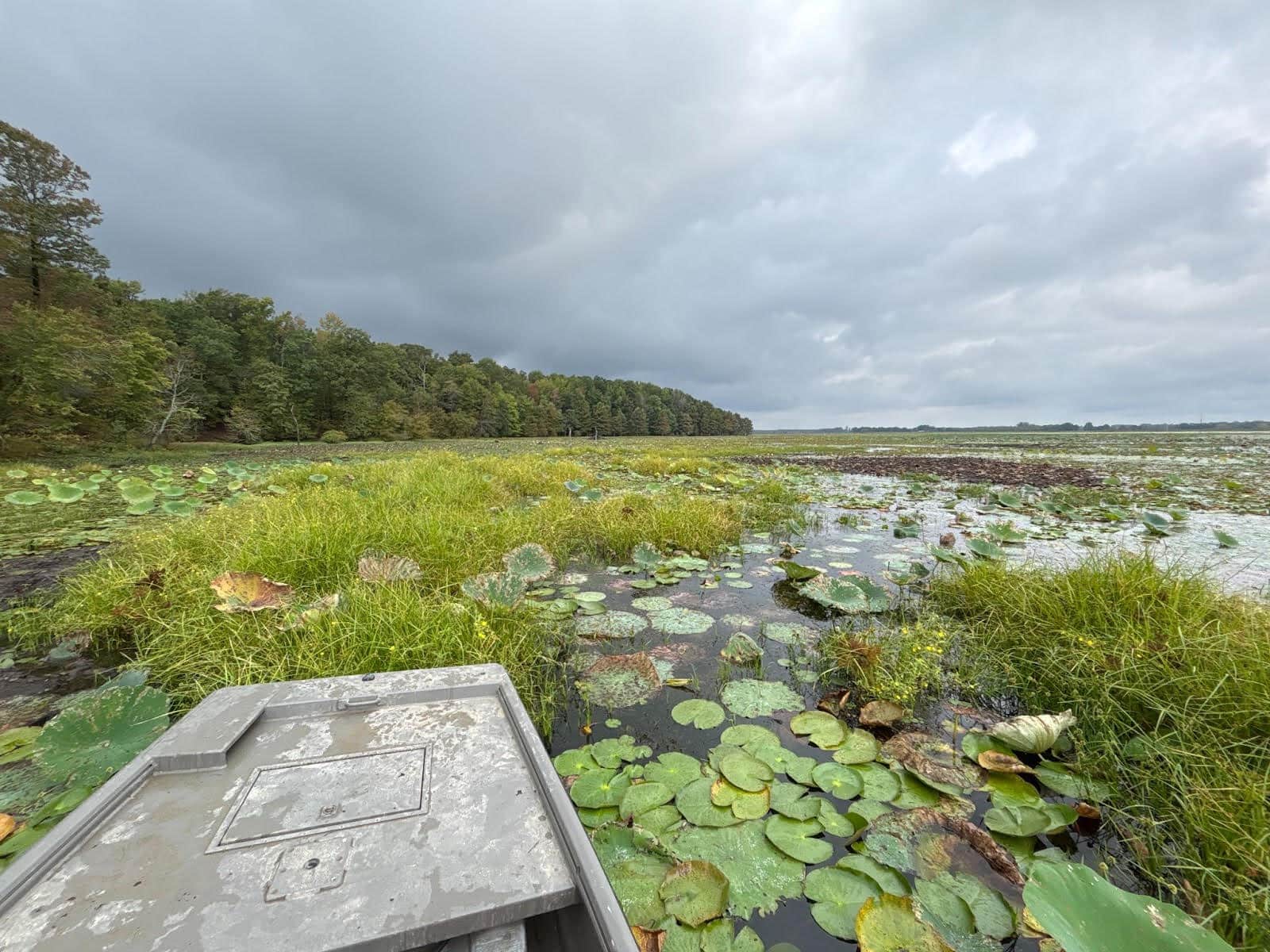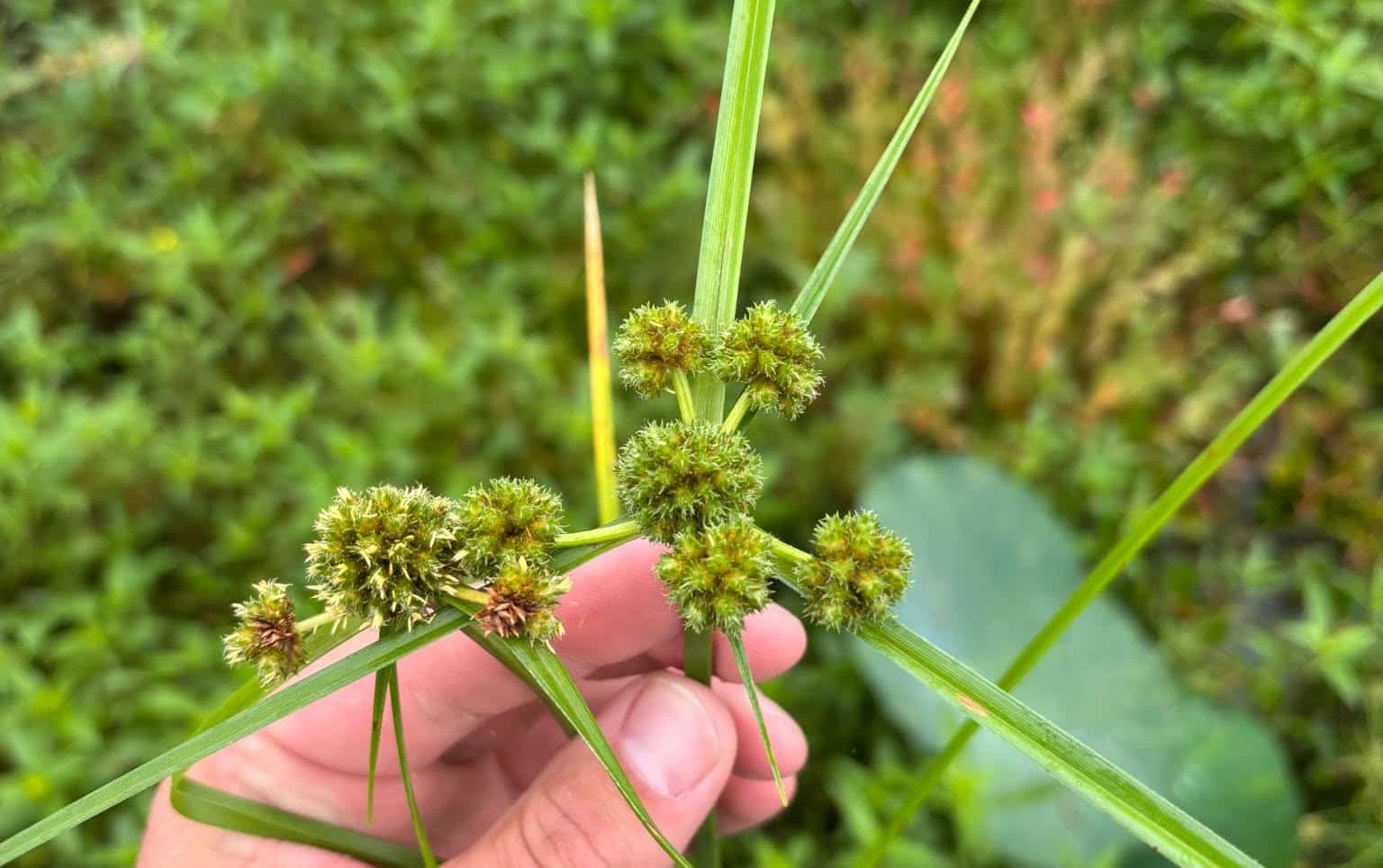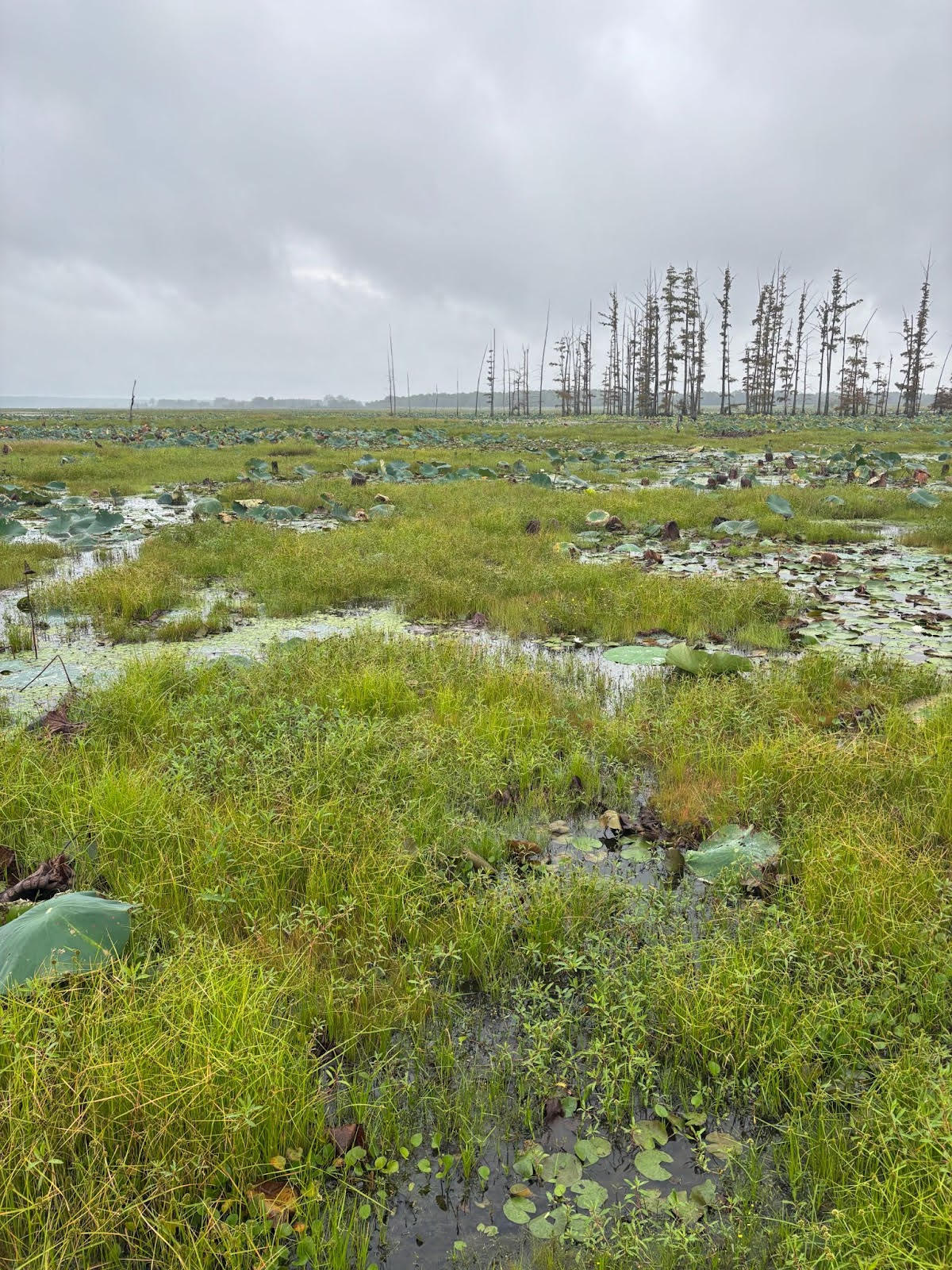AGFC treating invasive vegetation on Cane Creek Lake
BY Ryan Mozisek
ON 10-20-2025

STAR CITY — Cuban bulrush, a fast-spreading invasive aquatic plant, was found in September on Cane Creek Lake within Cane Creek State Park. The species is widespread throughout the lake, and initial treatments have begun to treat the infestation in specific areas.
According to Ryan Mozisek, the Arkansas Game and Fish Commission’s district fisheries supervisor in Monticello, widespread treatment of the invasive species this late in the year is not feasible.
“Management efforts will need to be continued over the next several years to combat the vegetation in the lake so that anglers do not lose any more fishable water to these floating islands,” Mozisek said.

Cane Creek Lake is a 1,700-acre lake in Lincoln County that was built in 1986 and is owned and managed by the Arkansas Game and Fish Commission. The lake has always had abundant floating and submerged aquatic vegetation. Increased focus on invasive aquatic species at the lake led to the discovery of the Cuban bulrush.
AGFC district staff also are working to manage other vegetation, such as American lotus, water lily, water shield and hydrilla, that have reached undesirable levels for anglers and biologists at Cane Creek Lake.

Anglers boating on Cane Creek Lake are urged to clean, drain and dry boats and trailers when they are through fishing for the day and before traveling to another body of water. Tiny fragments or seeds of invasive plants, like Cuban bulrush, can easily attach to boats, trailers, and fishing gear and be accidentally transported to another body of water, costing more time and money to control or eradicate the species before it takes over the fishery.
Visit www.agfc.com/ans for more information on aquatic nuisance species in Arkansas and how to report them to the AGFC.
####
CUTLINES:
BOAT IN WEEDS
Mats of mature Cuban Bulrush have been identified on the western side of Cane Creek Lake. AGFC photo by Ryan Mozisek.
CLOSEUP OF STEM
Cuban Bulrush is identified by its tightly clustered seed heads and triangle stem. It commonly grows on top of other floating or emergent vegetation. As it matures, dense mats form and the roots pull up the sediment creating a floating landmass that can block angling and boat access. AGFC photo by Ryan Mozisek.
WEED-CHOKED AREA
Massive spans of floating vegetation have covered nearly 70 percent of Cane Creek Lake’s total surface acreage, blocking out many areas for anglers. AGFC photo by Ryan Mozisek.
Recent News
Subscribe to Our Weekly Newsletter E-mails
Don’t miss another issue. Sign up now to receive the AGFC Wildlife Weekly Newsletter in your mailbox every Wednesday afternoon (Waterfowl Reports are published weekly during waterfowl season and periodically outside the season). Fishing Reports arrive on Thursdays. Fill in the following fields and hit submit. Thanks, and welcome!


